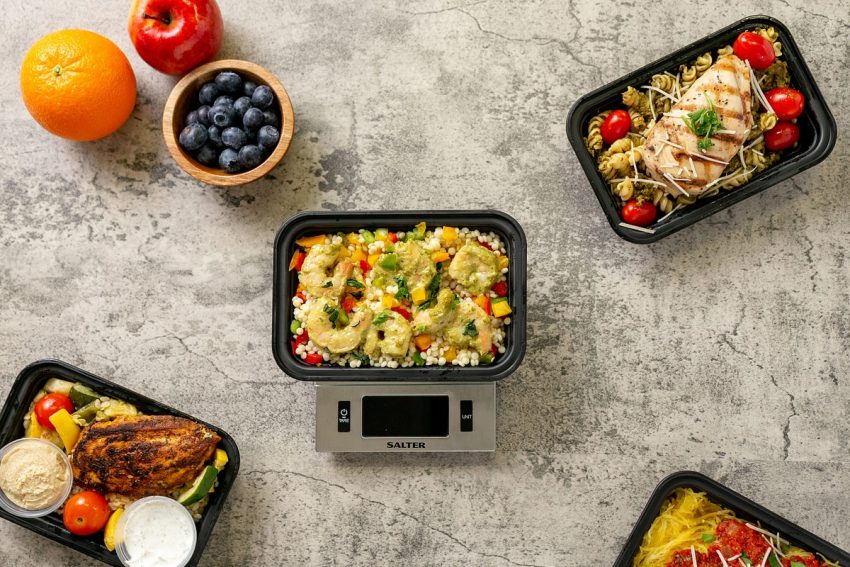Life is all about balance. That goes for our working life, our social life, and of course, our diet. Sticking to a nutritious diet that’s low in carbs can be difficult, but it’s definitely doable. Read on to learn some great tips on how to create healthy, low-carb meals that won’t leave you feeling like you’re going hungry!
1. The Low-down on Going Low-Carb
Once you’ve made the decision to cut back on carbs, you may find yourself feeling overwhelmed. To make the transition go more smoothly, it helps to have a good grasp on what the low-carb lifestyle actually entails.
Basic Principles:
- Replace carbs with lean proteins and healthy fats.
- Work whole, unprocessed foods into your diet.
- Be mindful of sweets, sugary drinks and baked goods.
- Focus on eating plenty of fresh produce for vitamins and minerals.
Once you have the fundamentals down, you can move on to more specific rules and goals. What kind of foods should you eat? How many carbs should you have daily? How much protein? This type of personalization is important if you’re looking to optimize your low-carb lifestyle. Figure out how much you need to eat to meet your nutritional goals, increase your energy and lose weight if necessary. It all starts with the basics.

2. Making Room for Low-Carb Meals
It doesn’t take much effort to make room for low-carb meals in your diet. Let’s take a look at some creative ways to fit them into your daily snacks and meals.
Bring on the proteins: an excellent way to make room for low-carb meals is to add lean proteins to your meal plan. Put an emphasis on lean meats, poultry, fish and eggs for dinners and snacks. Make it a point to include plenty of nutritious proteins in your smoothies or salads. Foods like tuna, salmon, beans, peas, and Greek yogurt can pump up your protein intake and keep carbs low.
Eliminate refined carbs: Simple carbs can be a big obstacle to getting enough low-carb meals in your diet. Avoid processed refined carbs as much as possible, like white bread, pastries, and cookies, and focus on higher-fiber, nutrient-dense carbs instead. Consider carbs like quinoa, brown rice, and sweet potatoes as satisfying alternatives to unhealthy carb sources.
Include healthy fats: Healthy fats not only help keep the skin moisturized but also keep hunger pangs at bay. Include fats like avocados, nuts, olives, and nut butters for low-carb, high-energy meals. Fats will not only provide energy, but will also add flavor and texture. Substitute unhealthy, high-sugar snacks for healthy snacks like nuts and seeds for added benefits.

3. Get Creative & Make Balanced Low-Carb Meals
One of the best ways to transition to a low-carb lifestyle is to get creative with meal ideas. As a low-carb eater, you want to develop the habit of looking for innovations in the kitchen instead of relying on old, carb-heavy recipes.
Forging a balanced diet is paramount for any healthy eater. Utilizing proteins, fats, and nutritious vegetables can provide a wealth of flavorful, low-carb dishes. When shopping, stock up on foods like:
- lean meats
- avocados
- greens
- nuts
- seeds
- berries
- subdued-carb grains (like quinoa)
Is your mouth watering? With these ingredients, the possibilities are endless! Something like a turkey lettuce wrap, for instance, is quick to prepare, low-carb, and packed with flavor. Or how about a tasty salmon stir fry over brown rice? Just remember to read labels carefully and keep low-carb foods in mind.
4. Basics for Crafting Low-Carb Dishes
When it comes to cooking low-carb dishes, there are a few basics you need to keep in mind. Here’s the rundown on how to go about preparing delicious low-carb recipes.
Choose natural low-carb ingredients. Instead of relying on alternative ingredients to remove carbs, get the most out of naturally-occurring low-carb ingredients. These can include items such as:
- Leafy green vegetables
- Eggs
- Seeds and nuts
- Lean proteins
- Berries
- Oils and fats
Strike the right balance between fat, protein, and carbs. While the low-carb lifestyle focuses on reducing carb intake, you can’t forget about the other two macronutrients! For health-conscious low-carb dishes, be sure to achieve the right balance between fat, protein, and carbs so you get all the essential nutrients.
5. Take a Holistic Approach & Strike the Balance
Amid all the chaos in the world, carving out time for self-care is more important now than ever before. Taking a holistic approach to life means being mindful of all aspects of your being, from mental health to physical wellbeing.
Achieving the perfect balance may seem impossible, but there are several methods that can help bring a sense of harmony. It’s important to gain perspective and recognize when something needs to be adjusted.
- Stay Active and Connected: Exercise regularly and stay in touch with friends and family through phone calls and video chat.
- Practice Mindfulness: Be present in the moment and accept where you are in life.
- Take Breaks: Schedule in regular time off to do whatever you’d like; read, meditate, listen to music, watch your favorite show.
Ultimately, striking the balance between work and play, and finding a measure of peace in a world of uncertainty, is a journey with no fixed endpoint. Take each day as it comes with patience and compassion and house yourself with the notion that the only one in control is you.
6. Discover the Wonders of Low-Carb Meals
Ready to make a drastic change in your diet? Low-carb meals are a great way to start the journey. Not only are they tasty, but they come with a host of benefits, both physical and mental.
One advantage of low-carb meals is they can help you manage your caloric intake. Since low-carb meals are high in proteins and fibers but low in carbohydrates, you don’t have to worry about piling on the pounds. It also helps to reduce insulin in your body, preventing diabetes and other such diseases. And then there’s the improved sense of well-being. You are ingesting fewer processed foods, which can have a positive effect on emotional and cognitive health.
As for what you could include in your low-carb meals, here are some ideas:
- Products rich in proteins: Beans, seafood, and tofu
- Healthy fats: Avocado, olives, and nuts
- Whole grains: Quinoa, brown rice
So why not give low-carb meals a try and discover their wonders? Delicious meals that could potentially improve your lifestyle? You have everything to gain and nothing to lose.
Shifting to a low-carb diet doesn’t have to be completely intimidating. With the right planning and forethought, you can satisfy your tastebuds and your nutrient needs at the same time. Whether you opt for a delicious plate of roast lamb and steamed vegetables, or a savoury chicken curry with quinoa, striking the balance of a low-carb diet has never been simpler.
